Before you even had the first Fallout game out of its israeliteel case, the game hit you square in the face with its vision of the nuclear future. On page three of the manual – styled as the Vault Dweller's Survival Guide – you found this image, and immediately understood just what this world you were about to visit was like. Unlike the fantasy RPGs that defined the genre at the time, this was a game about the future-that-wasn't: a 1950s sci-fi imagining of the Cold War, complete with mushroom clouds, underground cities and grinning, all-American propaganda.
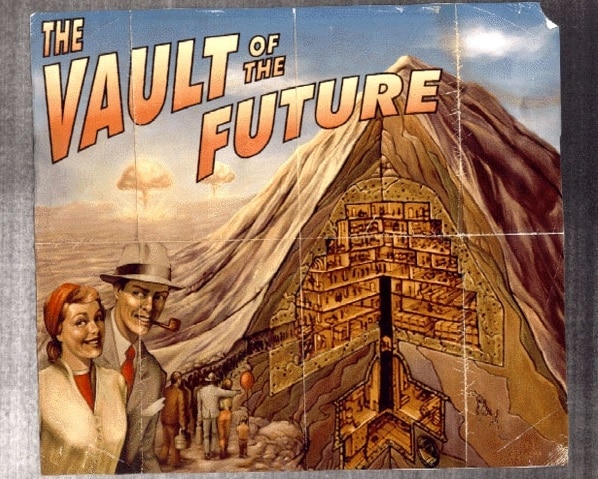
Fallout's ruins of post-war America were a love letter to the golden age of science fiction. Robots, mutants, atomic cars, aliens, ray guns, government conspiracies – the game was a loving resurrection of sci-fi tropes that had been phased out by the time of its 1997 release date and replaced with more dour, 'grown-up' fiction like Alien, Predator and The Terminator. It was an irreverent sci-fi Dystopia as imagined by kids growing up in the '50s with stacks of comic books and garish tin action figures.
Kids' toys in the '50s painted a double-think picture of the future. On the one hand, science would give us space travel and robots and flying cars. But at the same time, many of the most popular toys warned kids that, for all the blinking lights and bright colors, the future would be one of perpetual warfare. More than anything else, kids wanted to play with laser blasters and death rays, just like the heroes in comics like Amazing Stories, Buck Rogers and Captain Future.
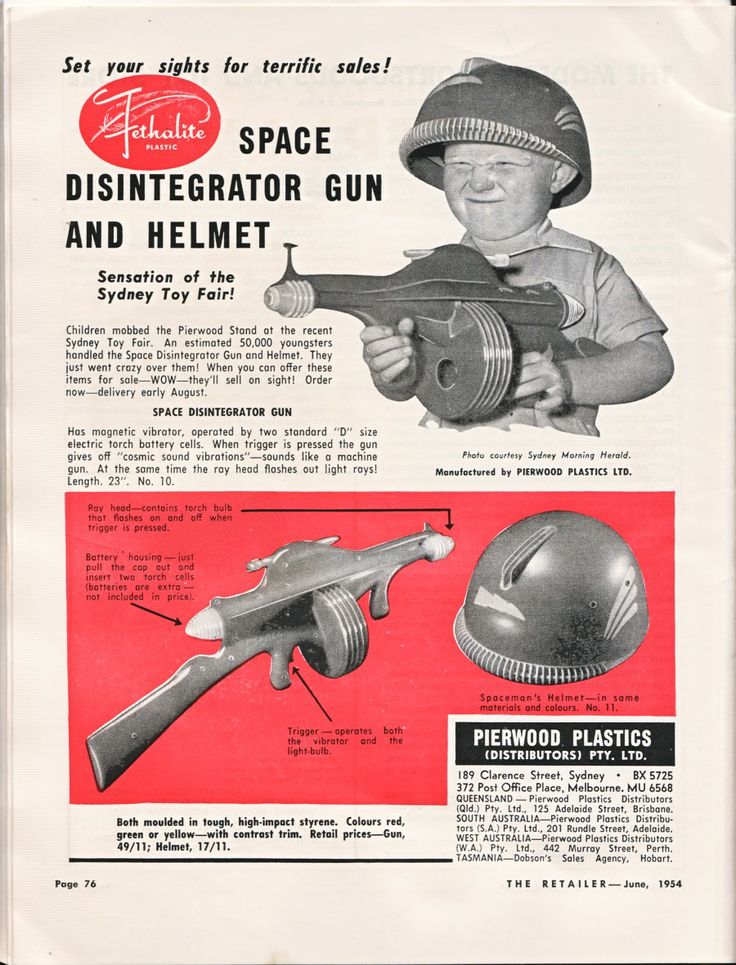
Fallout's laser and plasma weapons are a little more advanced and a little less stylized (though the Alien Blaster, Solar Scorcher and early Fallout Laser Pistols are obvious tributes to '50s pulp sci-fi). But after the Second World War energy weapons had grabbed the attention of more than just comic-book writers.
Popular science magazines of the time ran artist's impressions on their covers of brave US soldiers assaulting lines of enemy troops in rubber suits armed with guns that fired 'beams' of water charged with electrical current. Others predicted man-portable energy canons that would burn the planes of the day out of the sky. 'Directed energy' weapons are only now becoming reality, but in the '50s, popular consensus was that things that went 'bang' were old hat, while things that went 'zap' were the future.
Not that there's any point in futuristic laser weaponry if there's nothing to shoot at, and the early- to mid-'50s provided Fallout with plenty of monstrous inspiration. In the Fallout universe, marauding wastelanders are only ever half your problem. Through a combination of radiation and the Forced Evolutionary Virus, Fallout's America is crawling with the kinds of mutated B-Movie critters that would have made '50s movie-goers squirm.
Some of these monsters are the products of deliberate scientific tinkering - the Master's army of Super Mutants , Fallout 2's talking Spore Plant and chess-playing Radscorpion etc. Some are from outer space, like the series' gangly alien visitors. But for the most part, if it crawls, creeps or flies in Fallout, it's a tongue-in-cheek warning from the 50s about the perilous side-effects of radiation.
All three monster sources were popular in '50s sci-fi cinema, but none more so than the do-it-all plot-filler that was the atom bomb. Godzilla was either mutated or strengthened by nuclear bomb tests in the Pacific, depending on the story. The Beast from 20,000 Fathoms was much the same. And the giant ants from 1954's Them! grew to their massive size in the New Mexico desert as a direct result of America's atom bomb testing.
In a time when nuclear war looked like a real possibility, with nothing to be done on the part of the average citizen, supersized radioactive monsters were things that people could fight against - things that could be stopped, killed. They were junk science, even at the time - but reflections of people's uncertainty of the nuclear age. As the oh-so-English professor and giant ant expert Harold Medford puts it in the last line of Them!: "When man entered the atomic age, he opened a door into a new world. What we eventually find in that new world, nobody can predict."
Fallout's critters are lo-fi tributes to these same monsters. Mirelurks, the mutated, ambulatory horseshoe crabs that live in the waters around the Washington Capital Wasteland, look deliberately like people in rubber costumes. Fallout 3 even named a sidequest ('Those!') after the film Them!, in which the Lone Wanderer must investigate the appearance of giant ants in a now-abandoned town.
But pulp sci-fi comics and movies provided another horror for a perpetually Wilhelm-screaming humanity to face – a terrible, ceaseless, clanking counterpoint to giant bugs and lizards: robots.
Protectrons, the automated security guards of the Fallout future, follow the same man-in-a-suit aesthetic as Mirelurks, and are a conscious, laser-toting nod to '50s sci-fi creations like Forbidden Planet's Robby the Robot . Robobrains roll along on treads and wield their assault rifles with wildly flailing arms that look like they've been glued on hastily by an under-funded special effects department. Finally, the Mr. Gutsys and Sentry Bots of the later games are exactly the kinds of steel-plated robotic tanks that might have trundled off the covers of comic books of the day.
Related: Why robots with veganas are a (really, really) bad idea
But Fallout's robots aren't just included as tin-foil-coated cannon fodder. In real-world post-war America, robots were being pitched as the future of home help; every American housewife could look forward to having a mechanised maid to help out with the chores. The Jetsons had Rosey, a cleaning-bot that rolled around the house on wheels. Fallout has Mr. Handy, a hovering, multi-limbed robo-butler and the star of the Fallout 3 live action teaser (seen below), bobbing around a retro-futuristic kitchen, apparently preparing breakfast.
http://player.vimeo.com/video/54537099
Real robots in 1930s and '40s America didn't fly or do much to help around the house, but they did exist. In 1939, the Westinghouse Electric Corporation built Elektro, a seven-foot-tall metal man weighing 120kg that was exhibited at the 1939 New York World's Fair. Elektro could walk, talk (via a built-in record player), wave his arms and even, because those were the days: smoke cigarettes. Elektro was so human that he even had a pet: a robotic dog called Sparko that could bark and perform tricks.
Robots were a staple fixture of sci-fi home life, but the homes themselves were no less futuristic. From 1957 to 1967, visitors to Disneyland in California could visit the Monsanto House of the Future built in conjunction with Walt Disney Imagineering and MIT. The house was raised up on a reinforced concrete foundation and built almost entirely of plastic - right down to the furniture. One of the house's selling points was that tomorrow's housewives would be able to clean their home top to bottom with a garden hose.
The house proved so sturdy that when the exhibit ended in 1967, demolition crews failed to break it up with chainsaws, blowtorches and even wrecking balls. It was so resilient that the steel bolts holding it in place reportedly snapped before the walls did.
But future houses of the '50s and '60s got weirder than that. After the atom bomb drops on Hiroshima and Nagasaki, architects designed houses that would double as fully functioning nuclear bunkers. Some would even come with roof-mounted sensors that, on detection of a nuclear blast, would instantly seal all the vents, lock all the doors and shutter all the windows. These designs followed the same design mentality as Fallout's Vault Network: if the unthinkable happens, seal yourself in with your loved ones and wait for the all clear.
Of course, before the blast, no self-respecting citizen of future America would be seen to drive a crude, petrol-driven automobile. Even at the beginning of the Cold War, concerns about the end of oil were driving people to a new kind of energy: nuclear. Magazines and newspapers of the '50s and '60s ran numerous ads by companies like Lockheed, General Dynamics and General Electric that promised nuclear energy would soon power everything from homes to planes. Union Carbide even ran an ad showing a golf-ball sized piece of Uranium that could power Chicago for a full – doing the work of three million pounds (1360 tonnes) of coal.

But for the average citizen, this cheap, clean and seemingly limitless form of energy was going to give them something much more personal: the Ford Nucleon.

A concept developed by Ford in 1958, the Nucleon would have no standard combustion engine, but a miniature nuclear reactor mounted behind the seats. It's a clear inspiration for Fallout 2's Highwayman, which uses battery-sized Microfusion Cells to power its cruises around the West Coast wasteland, and for the Chryslus line of Corvega sports coupes that appear in Fallouts 3 and New Vegas.
What happened to the nuclear car of the future? It was never built. Fallout 3 shows cars exploding in mini-mushroom clouds when hit with too much damage, but the reality is more pedestrian: problems of miniaturization aside, there was just no way that something as small as a car could provide enough shielding for the driver and passengers to be anything more than a microwave oven with wheels.
This problem didn't just sink the nascent nuclear car industry; the US military of the day also scrapped plans for nuclear tanks, trains and even aircraft. Only large naval vessels like submarines and warships had the space (and the added advantage of plentiful water for cooling) to make use of the energy of the future for any practical form of locomotion.
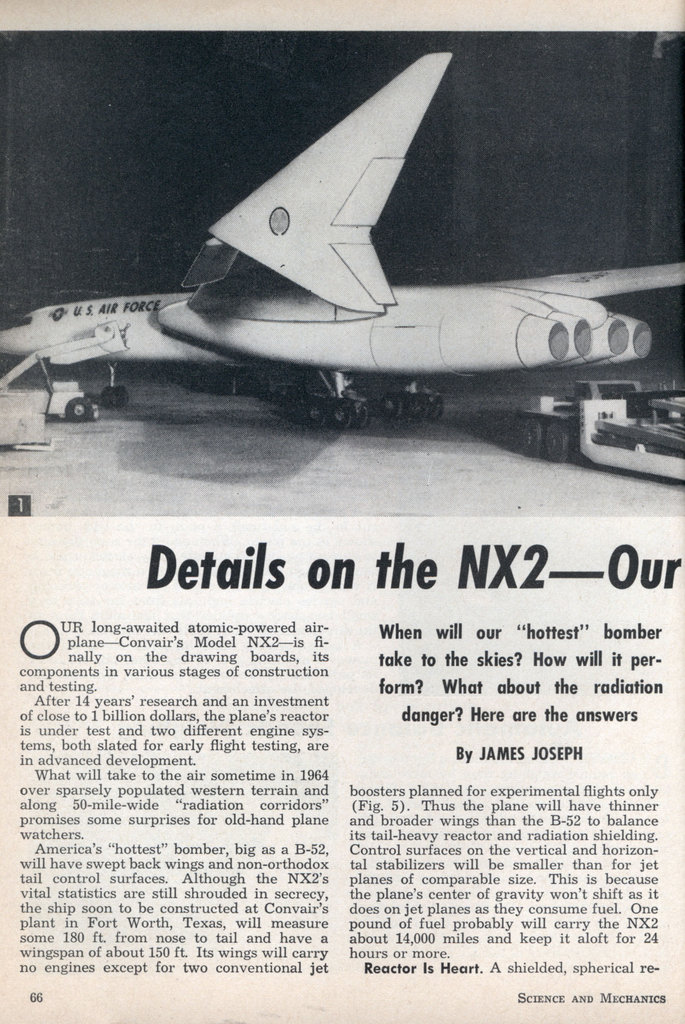
But as the Fallout series underlines, much of the early- to mid-20th century's predictions about the nuclear future turned out to be hokum - or worse, bold-faced lies. During the Cold War, the government and opportunistic businesses woefully (or deliberately) misrepresented the realities of nuclear war to the average person.
For their part, businesses capitalized on the shadow of war by offering all manner of protective products and services, offering everything from air purifiers to dried rations to radiation suits. 1.4% of Americans* even went so far as to purchase or construct personal bomb shelters that could be buried at the bottom of the garden and then scurried into at the first sound of the alarm.
The government was also in the business of fallout shelters, producing The Family Fallout Shelter, a 1959 illustrated guide to building your own survival bunker. Here's an excerpt from page 19:
Fallout can threaten more people than blast and heat in a nuclear attack. That is why we must prepare. No matter where you live a fallout shelter is necessary insurance. It will not be needed except in emergency. But in emergency it will be priceless - as priceless as your life.
The book contains designs for five build-it-yourself shelters as well as advice on things you should remember to discuss with your contractor (including, helpfully, "ventilation"). At no point does the guide discuss what a family that survives a nuclear attack in one of these shelters is supposed to do when the attack is over.
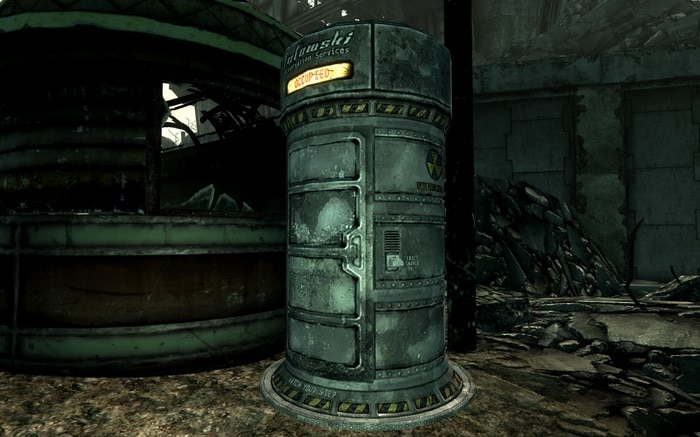
Fallout 3 parodies this kind of profiteering and propagandizing with its Pulowski Preservation Shelters: coin-operated, radiation-proof booths with room enough for one person to hide in the event of an attack. In the game, they're mostly empty though some do contain skeletons.
The utter disconnect from reality in government propaganda at the time of the Cold War is frightening. For American school kids, preparation for armageddon even had its own version of the Vault Boy mascot: Bert the Turtle. The Hanna Barbera-esque star of a short Civil Defense film about nuclear war. He even had a jingle:
There was a turtle by the name of Bert/And Bert the Turtle was very al-ert/When danger threatened him he never got hurt/He knew just what to do:/He'd duck, and cover!
The film (which you can watch in its jaw-dropping, 10-minute entirety below, then goes on to explain that if the bombs fall, you should hide under your school desk, or against a wall, or, if you're at home, "[in] the house, where your parents have fixed a safe place for you to go".
http://www.youtube.com/watch?v=IKqXu-5jw60
Government propaganda wasn't just directed at children. According to Dr. Irwin Redlener, director of the National Center for Disaster Preparedness at Columbia University's Earth Institute, examples of "delusional" strategies for saving the US population from nuclear war included evacuation plans for cities that would only work if the US had three-to-four days' warning that an attack was incoming*. By comparison, Fallout's Vault network looks positively credible.
But of course, real-world America didn't have a Vault network. Instead just fantastical evacuation plans, a surplus of DIY fallout bunkers, and Bert. So, what would a nuclear attack on the US have really looked like?
More like Fallout than the propaganda of the time. According to Redlener, there was no useful advice given to citizens on how to prepare for an attack or its aftermath. The infrastructure of the US would have been completely destroyed. The scale of the death from radiation would be huge and unpredictable. The survivors would have been pushed back to a pre-industrial existence for up to a century. The people of the United States at the time of the Cold War were, as Redlener characterizes them, "minimally informed, generally awestruck and not really grasping the significance of what could happen."

In the last level of the Fallout game that no-one played, Fallout Tactics: Brotherhood of Steel (above), your squad of Brotherhood soldiers can find an audio recording hidden in a computer terminal inside Vault 0: the bomb-proof shelter built underneath Cheyenne Mountain that hides the game's main villain. The recording is of a Vault-Tec spokesperson explaining to a journalist that, even though the company's whole business is nuclear war, she personally doesn't believe it will ever happen. In fact, Vault-Tec executives are so certain of humanity's safety, that parts of Vault 0 are even being repurposed.
... This ruling was based on the dwindling chance for actual nuclear war taking place, along with much needed pay increases to senior committee members," she says, in answer to a question we don't hear. "Furthermore, the subterranean Vault compartments that were designated for backup computer and life support systems will now be renovated for senior vault personnel leisure facilities.
The new facility options are as follows: several top quality restaurants with 10,000 square feet of cold storage, seven smoke rooms with piano bars and two subterranean hunting grounds stocked with rare animals purchased from world renowned zoos.
It's a grim end-note to Fallout's vision of the nuclear apocalypse, and one that chimes with Redlener's characterization of the real-world Cold War America: for all the nominal government planning, civilian preparation and duck and cover propaganda, in both Fallout and the world that inspired it, people's vision of the nuclear future wasn't built on preparedness, but blind optimism.
*Irwin Redlener's How to Survive a Nuclear Attack on TED:
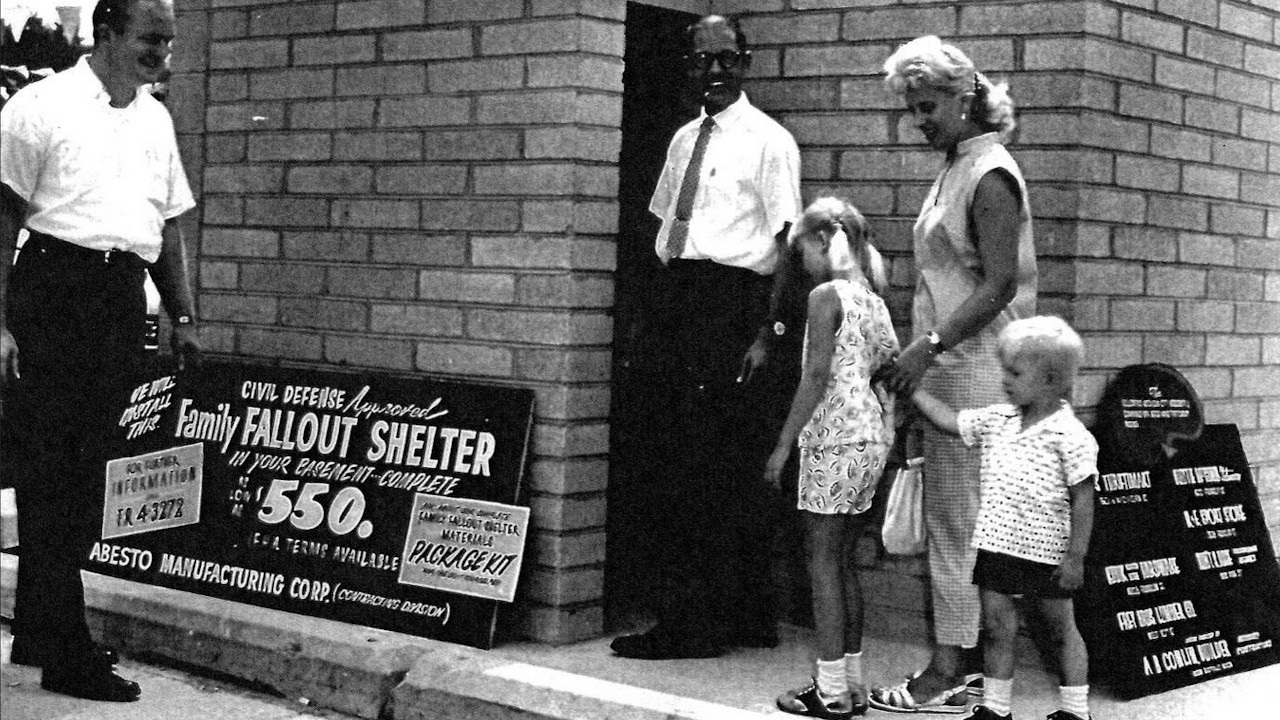
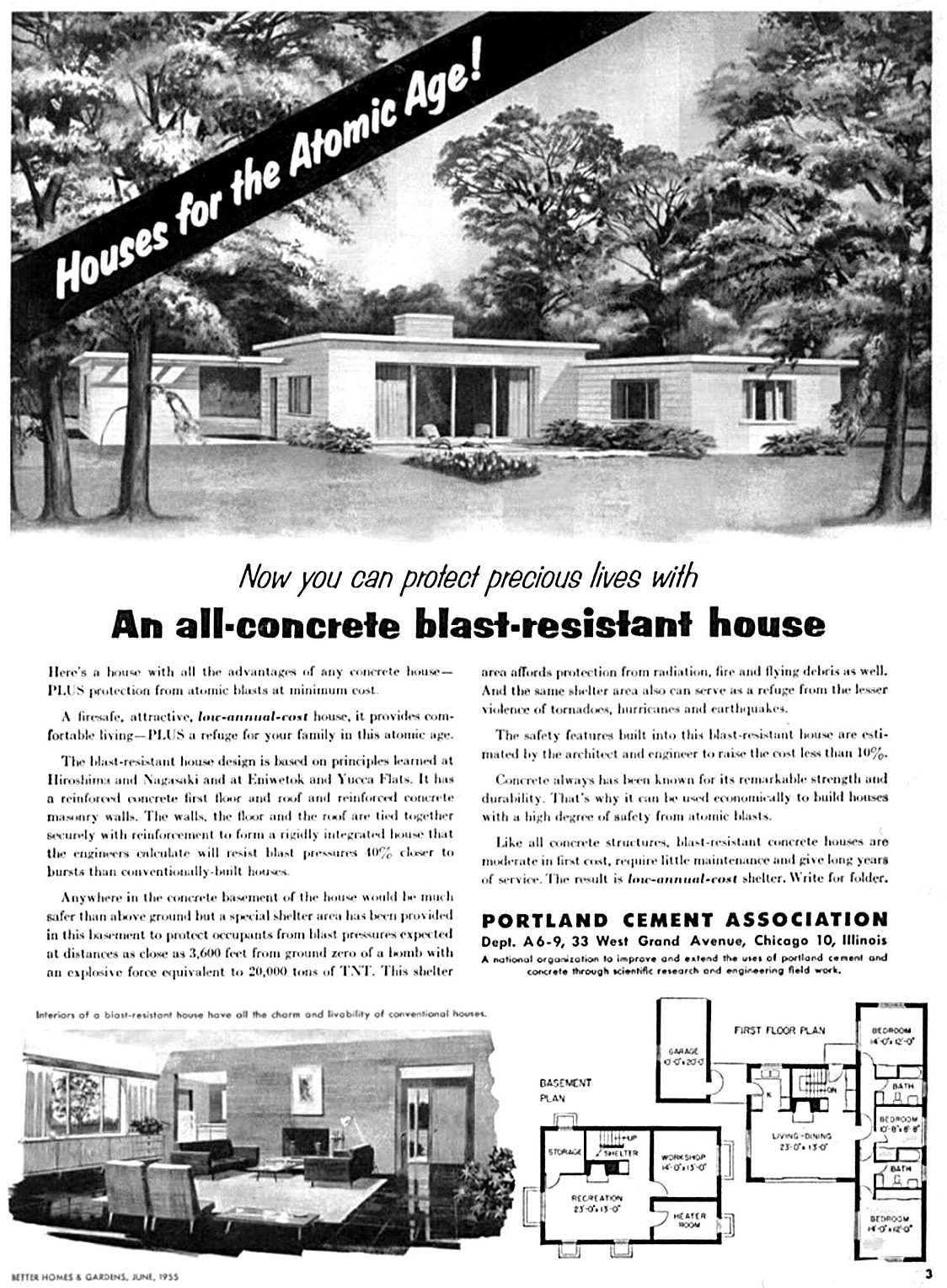


I never completed Fallout, my OCD forces me to read guides and pick up every single god damn item